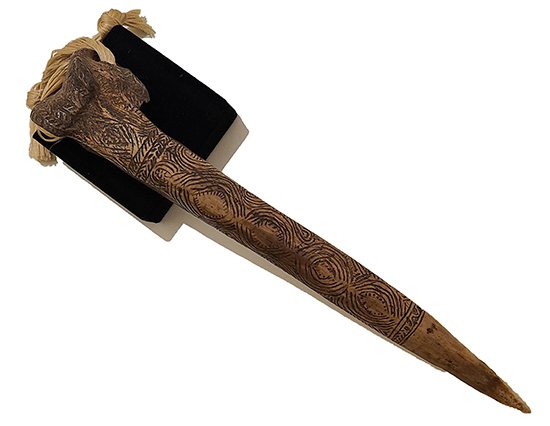Cassowary Bone Dagger

This bone dagger is from Kuttim Village in the East Sepik Province of Papua New Guinea. At just under 11.5” long, it is on the small side, with most bone daggers ranging from 13” to 16” long. For many groups in Papua New Guinea, bone was an important medium for making tools of all types. This dagger is made from leg bone of a cassowary, a large, flightless, and extremely dangerous, bird. Rarely, daggers are made from human femurs, usually from the skeleton of the warrior’s father or another man of status in the community. Human bone daggers were considered more prestigious and are stronger.
Warriors in the Sepik River area used many different types of weapons. While most, like spears, were intended to strike from a distance, daggers like this one were used for close combat. The daggers’ edges were left dull, but the tips are extremely sharp, ideal for finishing off an enemy that had been incapacitated by spears or arrows. Bone daggers were used in combat until as recently as the 1970s.
Bone daggers were also believed to have supernatural powers. For human bones, warriors believed they inherited the powers of the person who had surrendered the bone. Similarly, cassowaries were thought to possess a supernatural strength that could add to one’s own in combat. Cassowaries also play an important role in the mythology of groups in the Sepik River area.
Though no longer used in combat, bone daggers are still used ceremonially. They often play important roles in male initiation and other rituals. They are also worn as personal adornment by tucking them into a band of braided fibers worn around the upper arm.
This dagger is featured in the virtual exhibit Animal Origin: Tokens and Tools from Faunal Remains.
